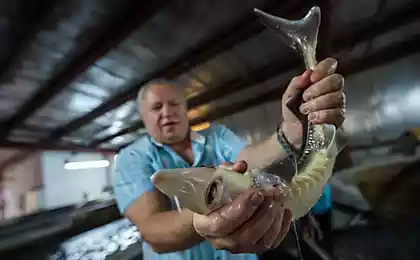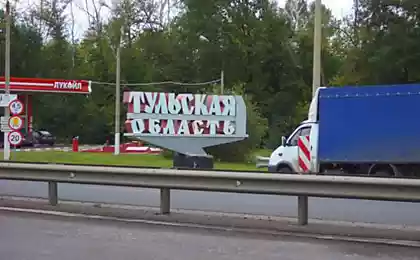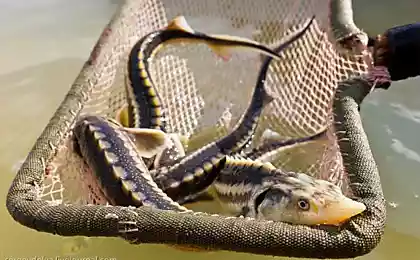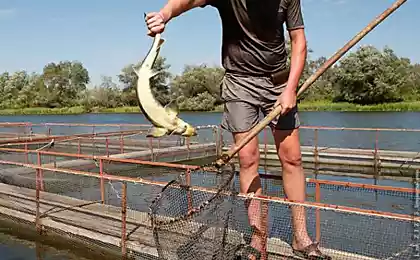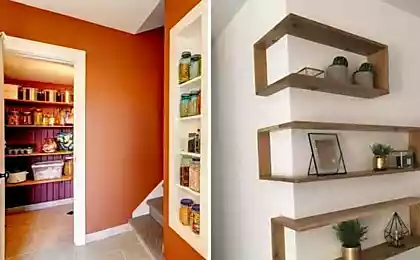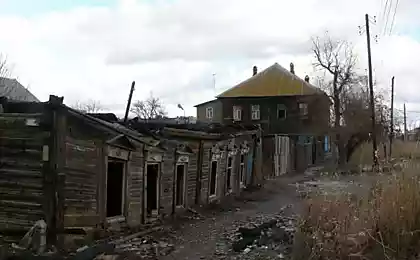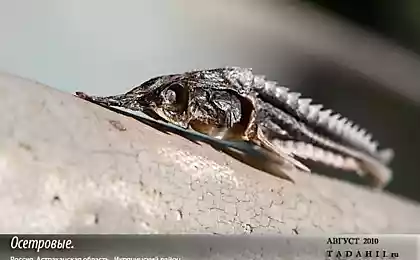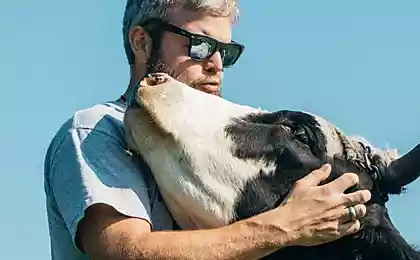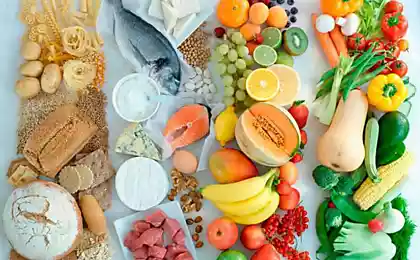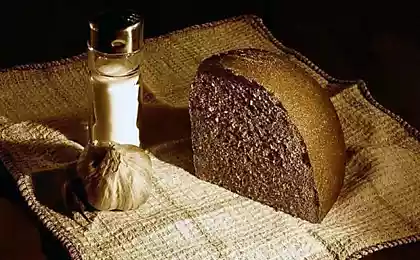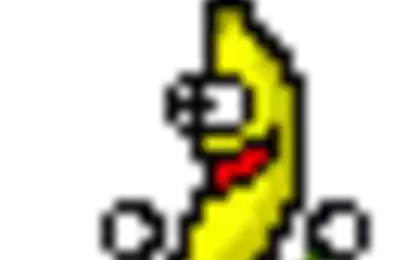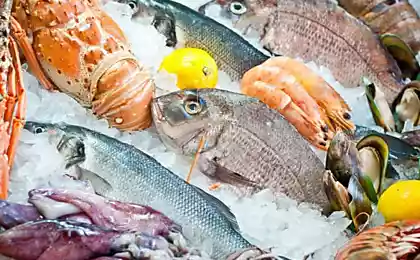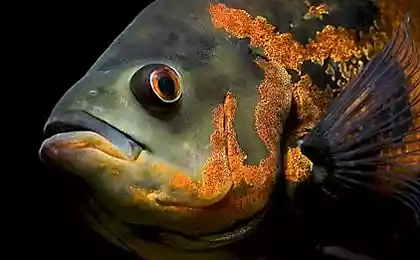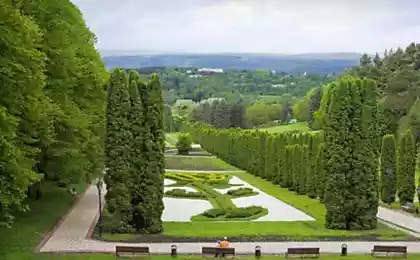1339
As bred sturgeon in Astrakhan
The author traveled to Astrakhan in the division of the Caspian Research Institute of Fisheries - is a farm which bred sturgeon.
In the center is a production complex: incubators, basin plant with the installation of a closed water supply pond shop, the production of live food, scientific and experimental complex at the molecular genetic studies, and more.
Since 2008 the center has been released about 2 million juveniles of beluga and Russian sturgeon ...
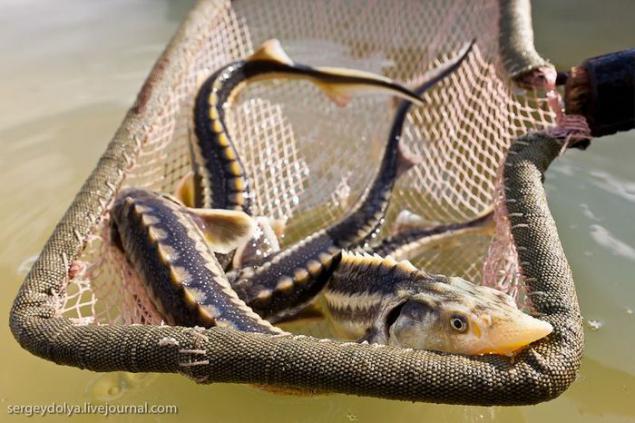
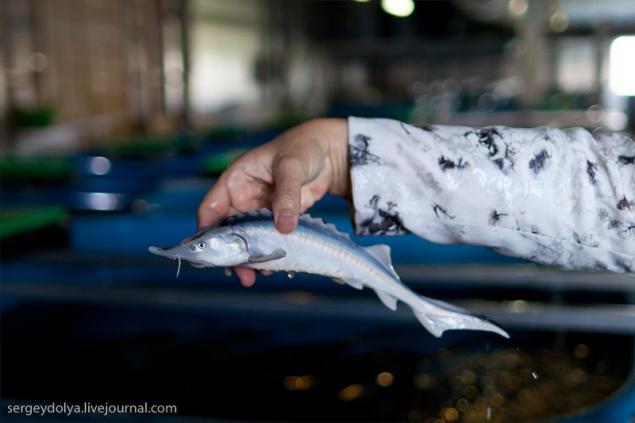
The complex is located in the village of Ikryanoe Astrakhan region:

Visitors are greeted by a stand dedicated to the arrival of the complex Vladimir Putin. I recall, during the visit of President kissed sturgeon:
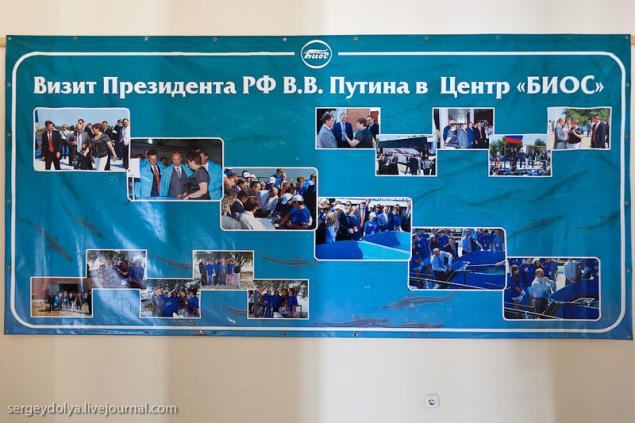
Wharf, from which release sturgeon into the sea:

In these "baths" deliver individuals from the complex to the big water:
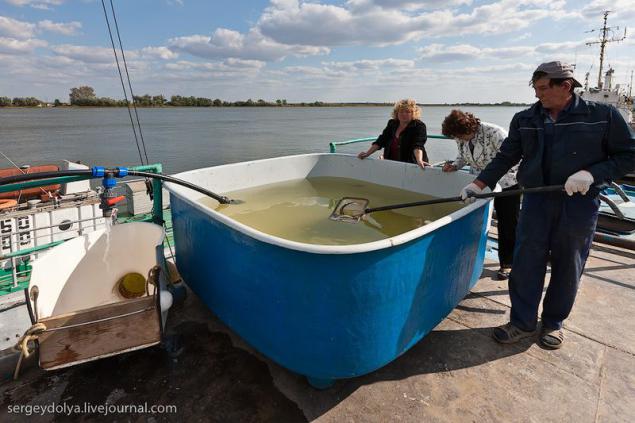
Produce is usually large fish, weighing up to 200 grams. These sturgeon take root in 30 percent of cases, as opposed to fry survival rates ranging from one hundred percent:
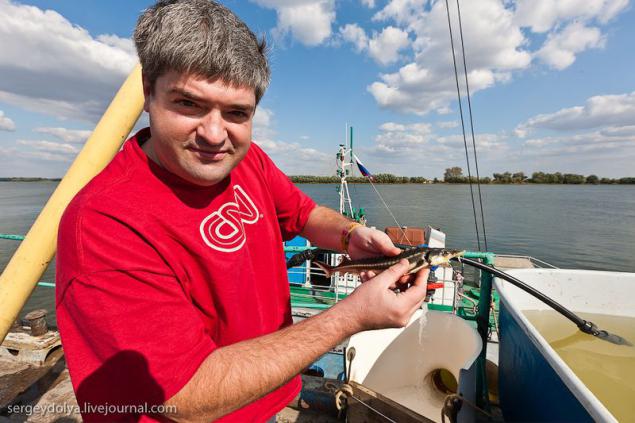
Sturgeon from the "bath" take out the nets and then placed in special barrels connected to a ship on the water. On that trip I was with my son and we released a few fishes. Now, perhaps, on the Caspian Sea sturgeon swim our

The ship is called a "slot" - a boat with a large displacement and "leaky" central section. Sturgeons are there in a natural aquarium and delivered to the place of "release" in the sea:
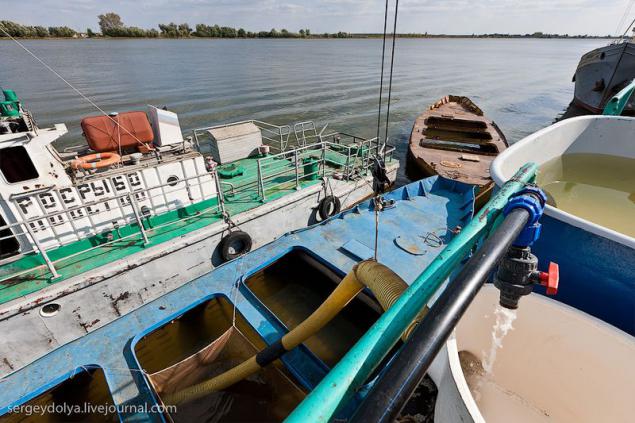
And it - he "BIOS", the shop where bred sturgeon. "Spa" stand in rows on the age and species. At the heart of the pure bred 7 species (beluga, Russian and Siberian sturgeon, sturgeon, thorn, paddlefish) and 4 hybrid forms for scientific purposes:
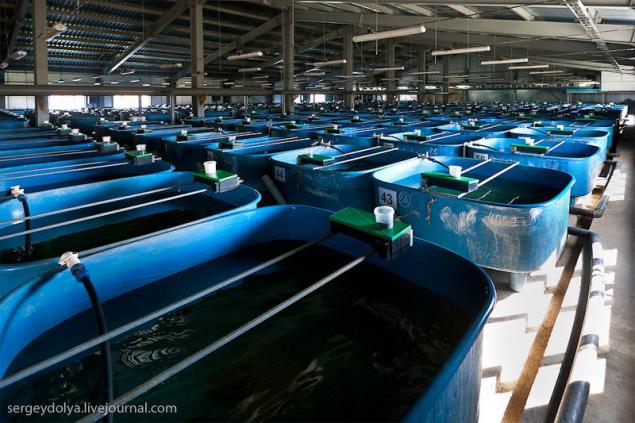
Currently the center is the largest sturgeon hatcheries in the country. Russian and foreign sector become fertilized eggs for further breeding:
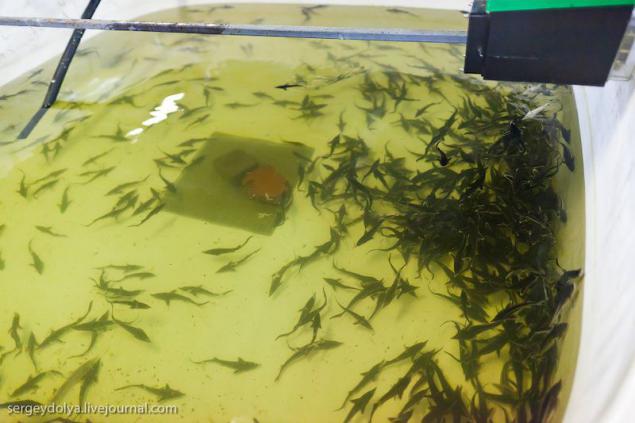
At the "BIOS" there are some shops to supply the entire complex. Sturgeon is very demanding on the quality of water, so it passes constant cleaning:
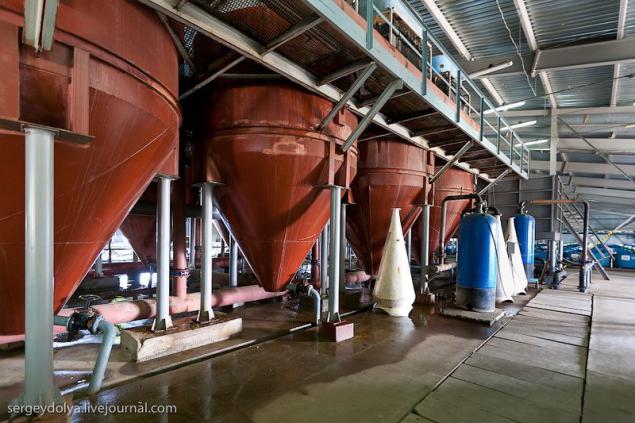
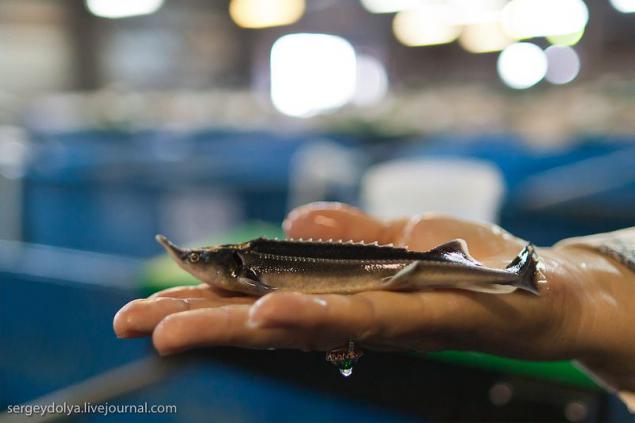
"BIOS" also develops special feed for sturgeon food:
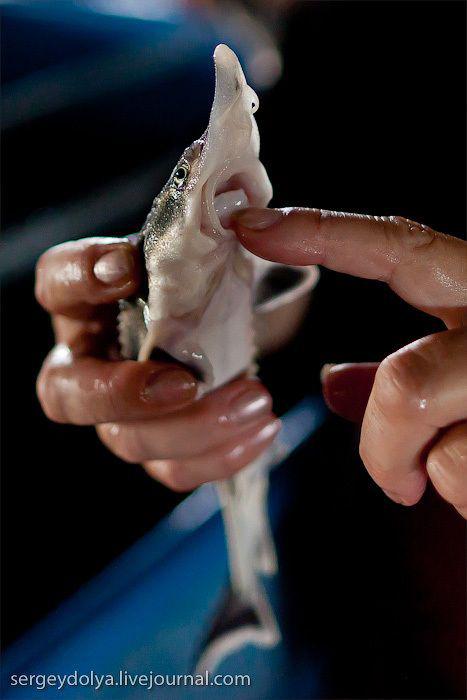
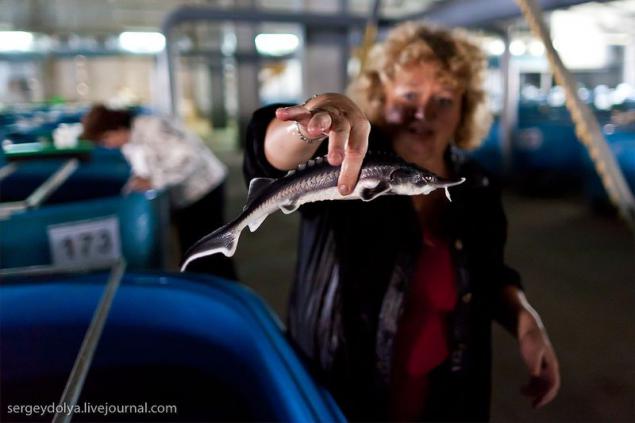

Paddlefish - sturgeon species, imported to us from America. In recent years become a popular aquarium views:
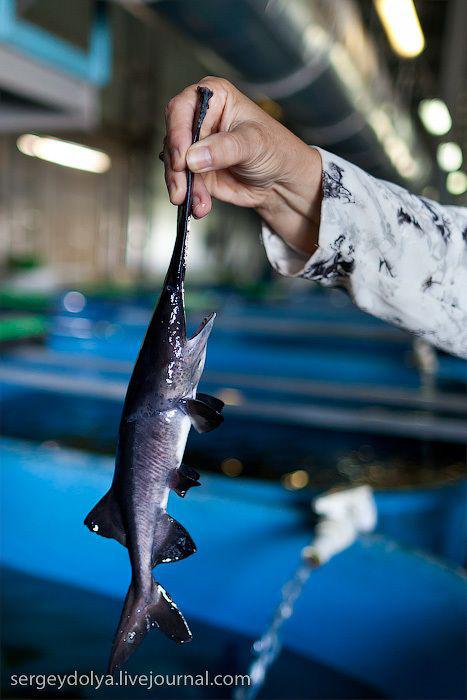
And this is the pond broodstock - huge adult sturgeon caviar that supply the entire center. Marat indicates the diameter of single fish.
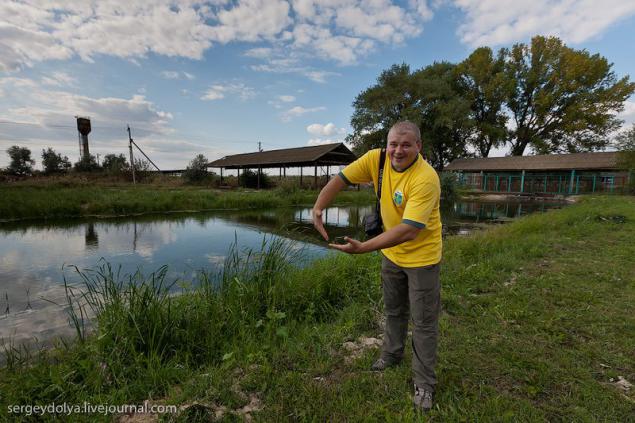
In addition, the center has a themed museum, and the production of regularly invited to school trips:

However, the picture is still bleak out. It turns out, the state pays a lot of money to replenish the stock of sturgeon poachers and remittance work and the work of scientists in their own benefit ...
Source: sergeydolya.livejournal.com
In the center is a production complex: incubators, basin plant with the installation of a closed water supply pond shop, the production of live food, scientific and experimental complex at the molecular genetic studies, and more.
Since 2008 the center has been released about 2 million juveniles of beluga and Russian sturgeon ...


The complex is located in the village of Ikryanoe Astrakhan region:

Visitors are greeted by a stand dedicated to the arrival of the complex Vladimir Putin. I recall, during the visit of President kissed sturgeon:

Wharf, from which release sturgeon into the sea:

In these "baths" deliver individuals from the complex to the big water:

Produce is usually large fish, weighing up to 200 grams. These sturgeon take root in 30 percent of cases, as opposed to fry survival rates ranging from one hundred percent:

Sturgeon from the "bath" take out the nets and then placed in special barrels connected to a ship on the water. On that trip I was with my son and we released a few fishes. Now, perhaps, on the Caspian Sea sturgeon swim our

The ship is called a "slot" - a boat with a large displacement and "leaky" central section. Sturgeons are there in a natural aquarium and delivered to the place of "release" in the sea:

And it - he "BIOS", the shop where bred sturgeon. "Spa" stand in rows on the age and species. At the heart of the pure bred 7 species (beluga, Russian and Siberian sturgeon, sturgeon, thorn, paddlefish) and 4 hybrid forms for scientific purposes:

Currently the center is the largest sturgeon hatcheries in the country. Russian and foreign sector become fertilized eggs for further breeding:

At the "BIOS" there are some shops to supply the entire complex. Sturgeon is very demanding on the quality of water, so it passes constant cleaning:


"BIOS" also develops special feed for sturgeon food:



Paddlefish - sturgeon species, imported to us from America. In recent years become a popular aquarium views:

And this is the pond broodstock - huge adult sturgeon caviar that supply the entire center. Marat indicates the diameter of single fish.

In addition, the center has a themed museum, and the production of regularly invited to school trips:

However, the picture is still bleak out. It turns out, the state pays a lot of money to replenish the stock of sturgeon poachers and remittance work and the work of scientists in their own benefit ...
Source: sergeydolya.livejournal.com
